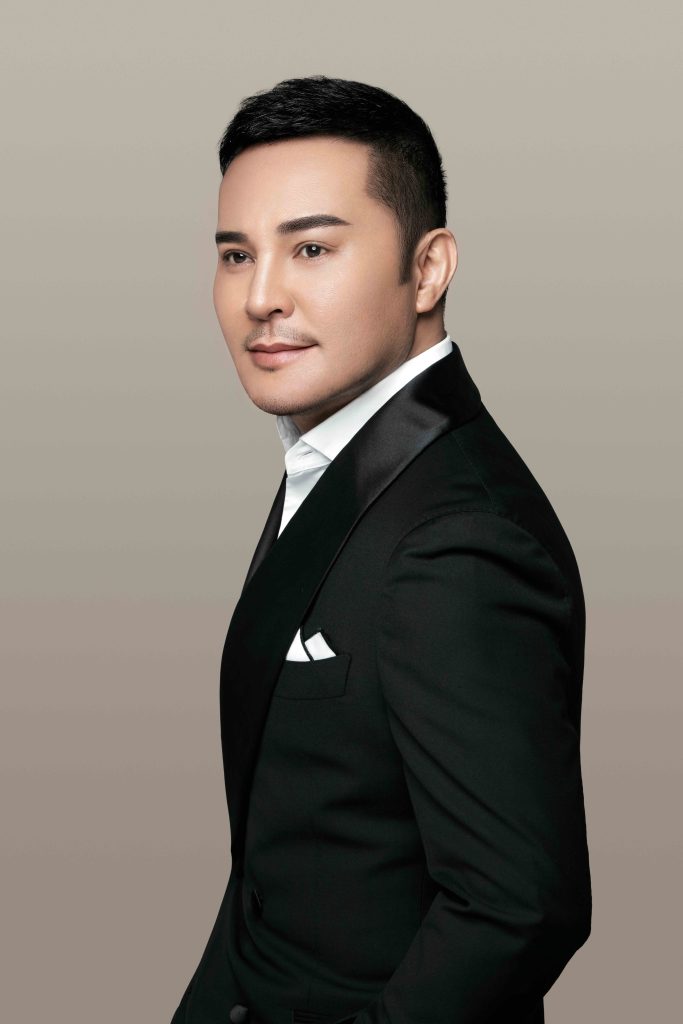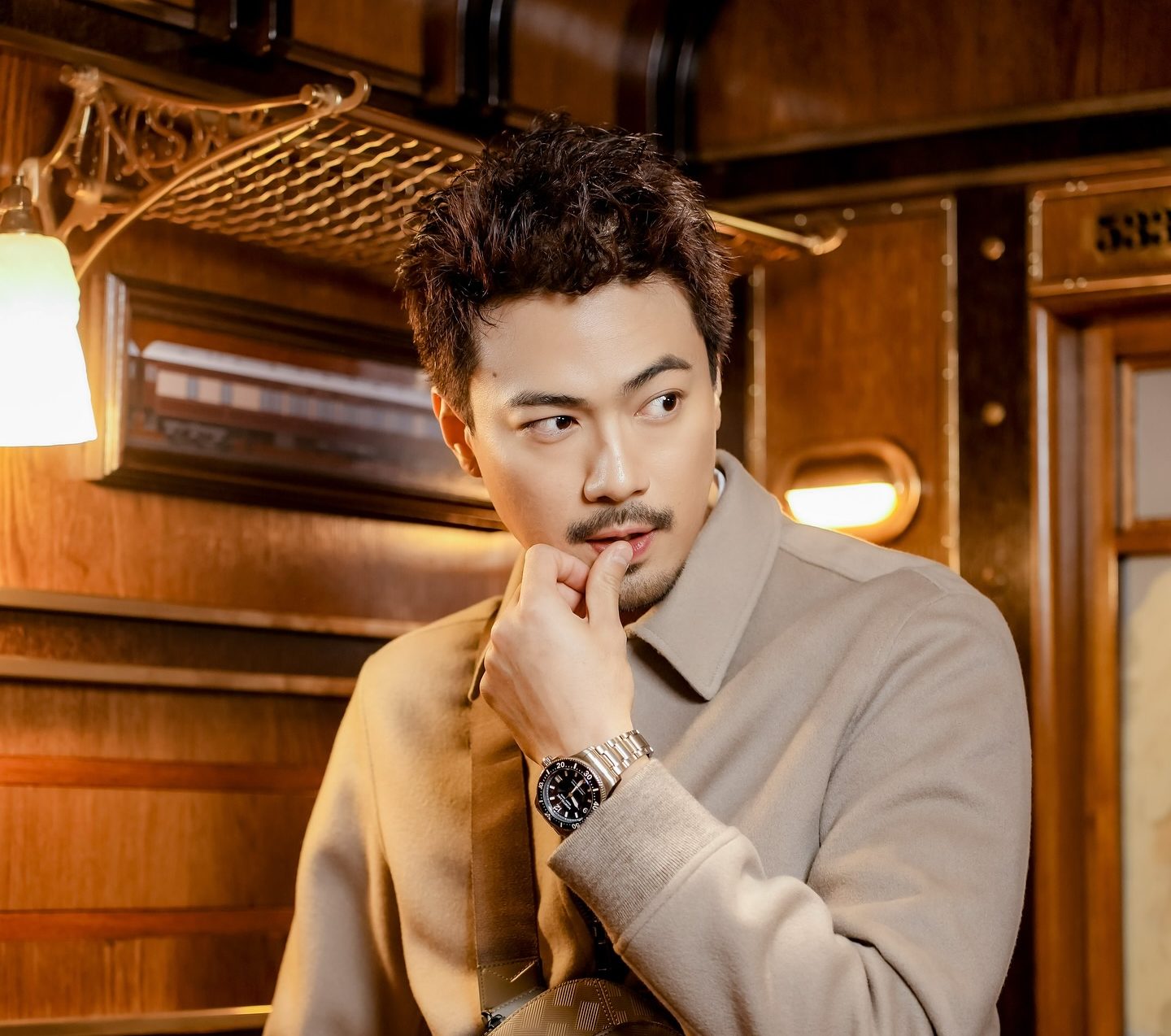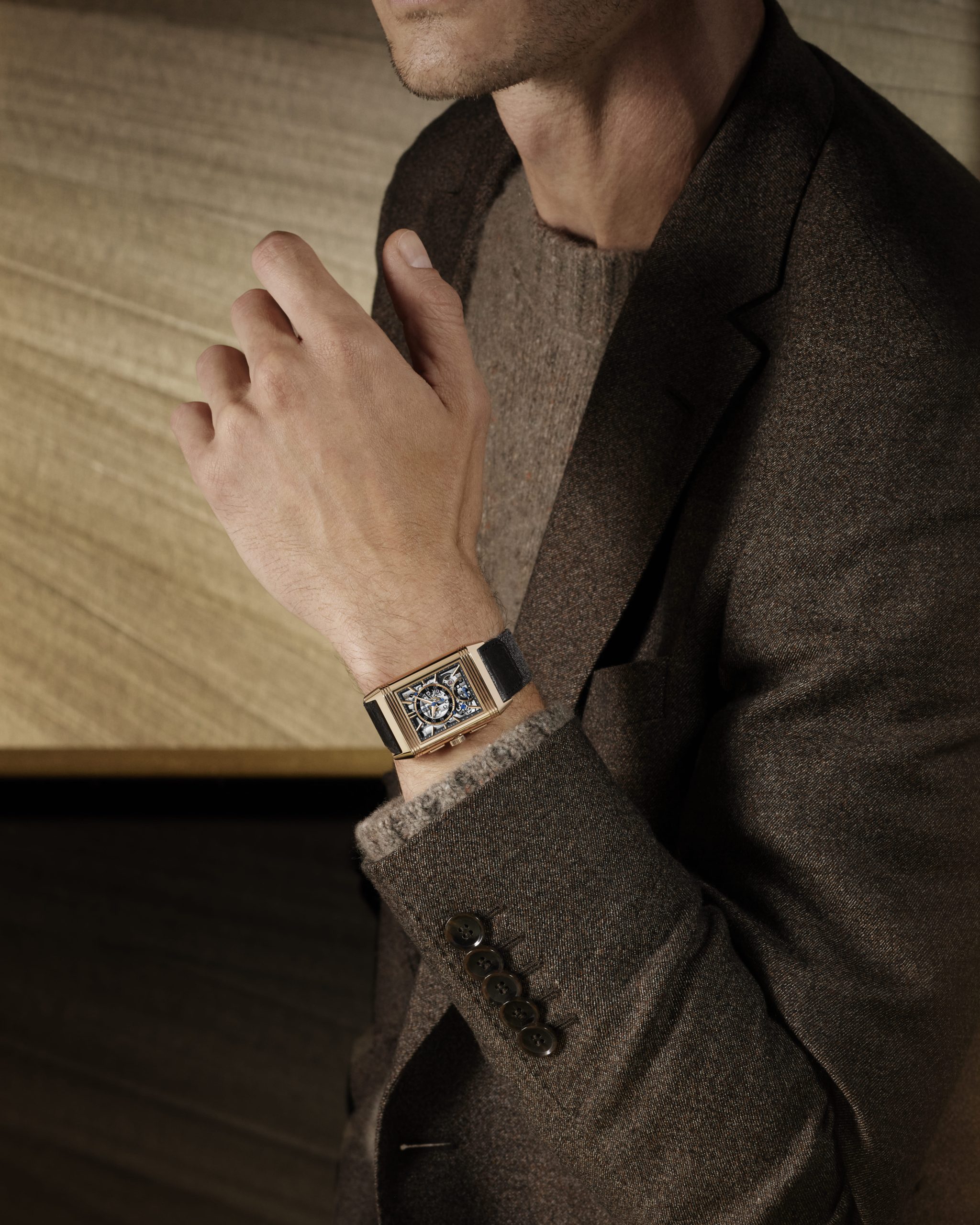Founded in 2000, C-beauty brand Maogeping elevates traditional Chinese culture and aesthetics through a modern artistic vision. The eponymous founder talks to Stephenie Gee about how the brand came to be, his approach to the craft and the art of makeup

To innovate, we often look ahead. But sometimes, the best way forward is found in traditional knowledge. Mao Geping understands this well. Born in 1964 in Wenzhou, Zhejiang, the pioneering makeup artist and entrepreneur’s talent for channeling Chinese culture into modern artistry has resulted in more than a few history-making accomplishments, including the launch of his eponymous line of cosmetics, which has gone on to become one of China’s leading makeup brands.
Translating ancient Chinese aesthetics into a makeup collection with modern appeal is a task that Mao is uniquely suited for, thanks to his decades of industry experience. As a child, he trained in Yueju opera – one of the five major Chinese operas – later joining the Zhejiang Yue Opera Troupe as a professional performer. “I started as a performer, and even then, I was deeply moved by how a single face could convey character, express destiny and evoke emotion,” Mao says. “It was then that I first understood – makeup is not merely an accessory to performance; it is an art form in its own right.”
Having paid close attention to the makeup and cosmetic techniques of the stage, Mao, at the age of 20, was able to step in for a makeup artist on sick leave – a moment of serendipity that led him to transition from performing onstage to working behind the scenes. In 1995, he garnered nationwide acclaim for his work on the TV series We Zetian, in which he worked with then 40-year-old actress Liu Xiaoqing to depict her character between the ages of 14 and 82 in a remarkable display of his skills. “This reaffirmed my belief: makeup is an art – one that awakens self-awareness and empowers emotional expression,” he says.
As his influence grew, so did his ambition. “At that point in my career, I had already achieved recognition in the artistic field and cultivated a certain influence, and countless individuals sought to learn the artistry of beauty from me. This ignited a profound sense of mission within me – a desire to help more people discover their own beauty. Yet, I became acutely aware that by working alone as a makeup artist I could never hope to answer the calls of the countless women yearning for beauty,” Mao explains. “My ambition stretched beyond the role of a celebrated makeup artist; I felt compelled to build an entire system – a framework through which multitudes could discover their beauty.”

So, in 2000, he founded Maogeping. Spanning makeup, skincare and fragrance, every product is designed to empower self-expression, accompanying each individual on their journey to arrive at a beauty that is authentically and uniquely their own. “I have never viewed makeup as a mere technical skill. To me, it is a comprehensive form of aesthetic expression, a confluence of culture, taste and personal sentiment. At the time, I found that no existing brand in the market fully aligned with my philosophy and requirements. What I needed was a vessel capable of carrying my complete aesthetic system. Thus, I made the decision to create Maogeping,” he recalls. “This brand would not only provide products but, more importantly, embody my philosophy. My vision was never to promote a standardised ideal of beauty – through a complete structure from aesthetics to philosophy, technique and product, I hoped to help more women find both the makeup that suits them and the confidence that comes with it.”
Alongside, Mao also launched the Maogeping Image Design Art School, personally overseeing curriculum development and teaching to establish a comprehensive educational system integrating philosophy, aesthetics, technique and product for up-and-coming makeup artists in the areas of movies, TV shows, runway presentations and stage performances in China. The goal was, and remains, to equip students with a foundational understanding of both the logic and artistry of makeup. “I have always believed that beauty is a force that can be passed on,” he says. “Today, we have ten schools, with a Hong Kong campus set to open next year. Having nurtured over a hundred thousand professionals, many of whom are now pillars of the industry, is one of my proudest achievements. They, in turn, are guiding others on their journeys to discover beauty—this is the legacy I cherish. To me, beauty is a force of understanding and respect. It transcends language and culture, allowing us to see one another – and ourselves – more deeply.”
Now, two decades later, Mao’s career-long passion for culture-driven beauty ideas has been further realised with the grand opening of its first Hong Kong boutique at Harbour City, representing a natural evolution of this long-term dedication. It signifies an openminded approach – to listen, learn and integrate within diverse cultural contexts, allowing beauty to become a common language for mutual understanding and connection.


How would you describe your makeup philosophy?
Makeup is more than technique; it is an expression of culture and beauty. My lifelong pursuit has been to fuse the spiritual core of Eastern aesthetics with modern cosmetic artistry. Through my theory of “Light and Shadow”, I seek to articulate the beauty of Eastern humanity in a contemporary artistic form.
First, there is “Light and Shadow” – the very architecture of beauty, a visual language. Light advances, while shadow recedes. I use this interplay to construct a visage, to convey emotion and essence. It is a language without borders, universally understood across cultures.
Then, there is the East – the cultural tapestry of my upbringing. I draw profound inspiration from traditional painting, sculpture and theatre. This, combined with my subsequent work in film and fashion, has given me a mastery over the balance of light, shadow, structure and rhythm. These principles form the very foundation of my creative philosophy.
Finally, there is the individual – the most important beginning and end. Every person possesses a unique structure and essence. Superior makeup does not mask or replicate; it uses light and shadow to reveal and perfect her own distinct beauty.
Do you have a personal favourite product from your brand, and why?
It is difficult to single out a favourite, as every product is the result of immense dedication, each with its own unique creative background and aesthetic philosophy.
However, if I were to highlight one collection of particular significance, it would be the “Aura of the East” series, created in collaboration with the Palace Museum. This collection is the fruit of a profound partnership, drawing inspiration from cultural artefacts, traditional objects, their hues and their symbolism. Through extensive research and meticulous refinement, it embodies my personal interpretation of the Eastern cultural spirit. It stands as our most culturally expressive and artistically ambitious work to date.
For seasonal recommendations, as we approach autumn and winter, I would personally suggest the Luxury Caviar Facial Mask. Its performance in hydration, restoration, and its exquisite texture on the skin is exceptionally refined. It is a product I genuinely favour during these colder months.

What has been some of your biggest challenges encountered throughout your career, and how did you overcome them?
The founding of the brand in 2000 was, in itself, a significant undertaking. At that time, China’s beauty market was still in its infancy, and the understanding of professional colour cosmetics was just beginning to take root. When I first introduced the concept of “Light and Shadow Aesthetics,” it was largely unfamiliar. For instance, one of our now-iconic products – the matte highlighter – initially faced considerable scepticism upon its launch.
The prevailing foundation philosophy then was solely about achieving an even skin tone. The approach I championed, however, went beyond this. After perfecting the complexion, it used highlight and contour to sculpt the face’s natural architecture. To many consumers at the time, this seemed unnecessary, even counterproductive, as they feared it would make the makeup look muddy. Furthermore, Maogeping’s highlighter wasn’t the common shimmery or glittery type, but a matte formula that created structure and aura through subtle tonal variation – a nuance that was largely misunderstood.
Yet, I held a firm belief that beauty transcends a uniform complexion; it is the expression of structure, personal aura, and individuality. So, together with my team, I took to the beauty counters, patiently demonstrating the concept through real-life applications. We engaged in continuous dialogue with customers and embedded the philosophy of light and shadow through education, demonstrations, and masterclasses.
Today, techniques like contouring and highlighting are widely embraced, often regarded as a more advanced approach to makeup. I believe this shift is a testament to the value of staying true to one’s vision.

You incorporate a lot of Chinese elements/imperial aesthetics in your work. Why is this?
My collaboration with the Palace Museum’s cultural innovation team began in 2018 and has now spanned nearly eight years – a partnership that will continue long into the future.
My approach has never been to forcibly incorporate imperial aesthetics into the designs. Instead, it stems from a profound respect for traditional culture. The Forbidden City is a comprehensive museum that synthesises architecture, history, art and cultural spirit, housing over 1.86 million artefacts of immense cultural depth. As the world’s largest ancient palatial architectural complex, studying its culture inherently involves an engagement with its courtly aesthetics.
Since 2018, starting from the golden tiles and vermilion walls of the Palace, we have journeyed through its grandeur – from the 600th-anniversary celebration and imperial ceremonies to the elegant charm of the Song Dynasty, the secret realm of splendour, and the Wendao Oriental, meaning “The Way of the East”. We are now presenting our sixth collaborative collection.
In my view, the value of culture does not lie dormant within museum halls. It should be perceived, appreciated, and conveyed through contemporary language, vision, and modes of use. That is why I have chosen the intimate, youth-oriented medium of fashion and beauty to revitalise this heritage, giving it a modern voice. This is a creative philosophy I will steadfastly continue to uphold.
Could you tell us more about your signature light and shadow technique?
“Light and Shadow Aesthetics” is both a perspective on beauty and a refined art form. When light and shadow are applied with precision, they become an artistic language for deconstructing beauty. Through the interplay of warm and cool tones, and the subtle enhancement of light and dark, we create visual depth and dimension. This technique of sculpting with light and shadow redefines facial contours and skin texture, crafting an exquisitely sculpted visage that reveals the unique grace of the Eastern woman. The core purpose of my light and shadow technique is not to alter one’s features, but to reveal and perfect their inherent beauty.
This philosophy integrates decades of my experience across traditional painting, sculpture, theatrical arts and cinematic makeup. It has become the foundational language for my educational system and product development. Whether for professional artistry or daily use, my aspiration is for it to be an aesthetic tool that can be understood, mastered, and ultimately, wielded by every individual to express their own beauty.

What are some of the characteristics of C-beauty?
I firmly believe that beauty is inherently cultural. What we perceive as beautiful is often the result of a confluence of culture, aesthetic traditions, and contemporary trends. The uniqueness of Chinese beauty does not stem from a superficial collage of elements or labels, but from a deeper cultural nourishment – an aesthetic logic that grows organically from a way of life.
Every Chinese beauty brand is, in its own way, attempting to respond to its interpretation of Eastern beauty, thereby expressing its own unique character. This diversity is not artificially manufactured; it is the natural outcome of a rich cultural soil. This, I believe, is the true allure of Chinese beauty today.
Any makeup trends that you’re interested in these days?
My focus has always leaned less towards transient trends, and more towards deeper, internal shifts – specifically, the evolving perception of beauty itself. This evolution is fundamentally rooted in the individual and their culture. Today, across Hong Kong and broader Asian markets, we are witnessing the growth of both diversity and localisation.
Increasingly, individuals are embracing their own frameworks for understanding beauty. There is a move away from adhering to a singular standard, towards a journey of self-discovery that seeks resonance within one’s own cultural context. This inclination is particularly evident in culturally rich and aesthetically mature cities like Hong Kong.
Therefore, when we introduced our philosophy of “Light and Shadow Aesthetics”. It was never merely about presenting a technique. It was an endeavour to provide a means to comprehend one’s unique facial architecture, to appreciate cultural distinctions, and to connect with one’s inner essence. True beauty is not about conformity to an external ideal, but about harmony with oneself. It is not about playing a role, but about seeing one’s true self.

What’s next for you?
I believe many brands harbour an international vision, and Maogeping is no exception. For us, however, internationalisation is not merely about commercial expansion; it is about a genuine respect for, and integration with, the culture of each locale.
Hong Kong serves as both a crucial starting point for our global journey and our current focal point. Concurrently, we are actively engaging with various other markets, approaching each with a mindset geared towards learning and cultural exchange. It is our hope that after successfully integrating into the Hong Kong market, we will further pave the way for a truly global presence.
See also: New beauty and lifestyle launches: Rimowa, CurrentBody, Nars, and more






